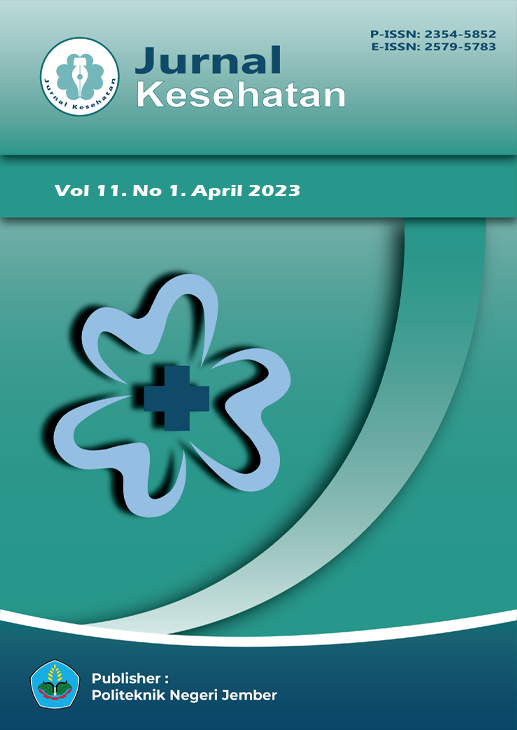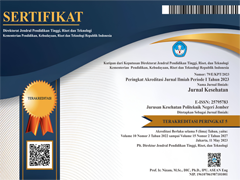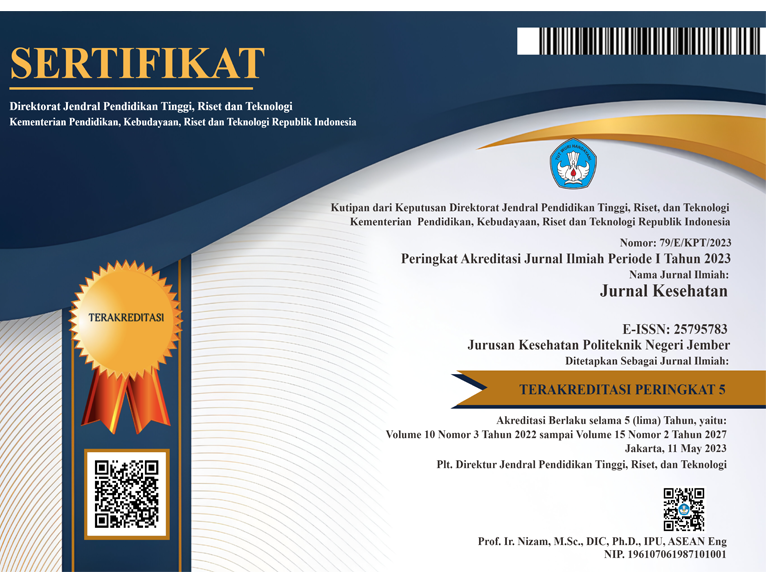Tepung Kedelai dan Tepung Daun Kelor dalam Pembuatan Crispy Cookies Sebagai Makanan Selingan Cegah Wasting
DOI:
10.25047/j-kes.v11i1.276Downloads
Abstract
Wasting is an acute malnutrition condition that often occurs in toddlers. Wasting can be caused by a lack of nutrition and infectious diseases that can cause metabolic syndrome resulting in drastic weight loss. One way to solve the Wasting problem is by providing high-protein foods. This study aims to identify the characteristics of crispy cookies with the addition of soy flour and moringa leaf flour as a snack to prevent Wasting. The study design used was a Completely Randomized Design (CRD) with 6 formulations of soybean flour: moringa leaf flour, i.e 9: 1, 8: 2, 7: 3, 6: 4, 5: 5, and 4: 6, and repeated 4 times. The results showed that the higher the amount of soy flour, the higher the protein content in crispy cookies. The higher the addition of moringa leaf flour, the more crispy the cookie texture. There is a significant difference (sig < 0.05) between protein content and crispness. The best treatment in this study was the P3 treatment (soy flour: moringa leaf flour = 7: 3) with organoleptic quality characteristics of strong brown color (27.5), slightly strong unpleasant aroma (40.0), crunchy texture (15.8), strong sweet taste (45.0), slightly weak bitter taste (32.5), slightly strong unpleasant aroma (40.0), the protein content of 10.37 g/100g, and fracture strength of 4.25 N. The results of the organoleptic test were the best treatment for toddlers showed that 80% of the toddlers liked it and 20% dislike it. Six pieces of soy flour cookies and moringa leaf flour can be given to children aged 1-3 years to meet 23% of their daily protein needs. For children ages 4-5, 14 pieces per day can fulfill 10% of the daily protein requirement.
License
Copyright (c) 2023 Ninis Lestiarini, Rindiani Rindiani

This work is licensed under a Creative Commons Attribution-ShareAlike 4.0 International License.
Authors who publish in this journal agree to the following terms:
1. Copyright belongs to the medical journal as a publication
2. The author retains copyright and grants the journal rights to the first publication carried out simultaneously under a Creative Commons Attribution License which allows others to share the work with an acknowledgment of the author's work and initial publication in this journal.
3. Authors may enter into separate additional contractual arrangements for the non-exclusive distribution of the work (eg sending it to an institutional repository or publishing it in a book) with acknowledgment of initial publication in this journal.
4. Authors are permitted and encouraged to post work online (eg in institutional repositories or on their websites) before and during the submission process, as before and larger citations of published work (see Effects of Open Access).
Selengkapnya tentang teks sumber ini














